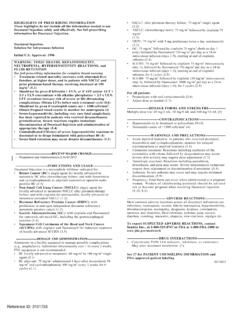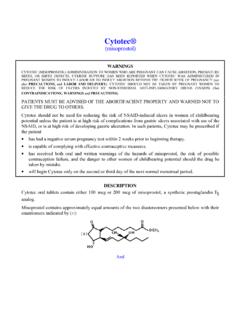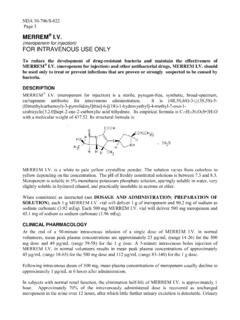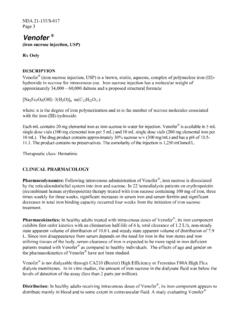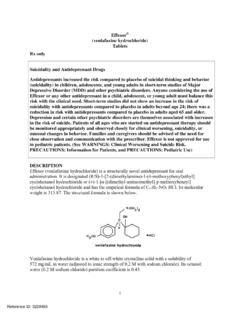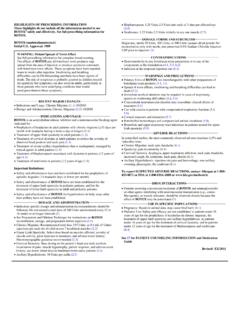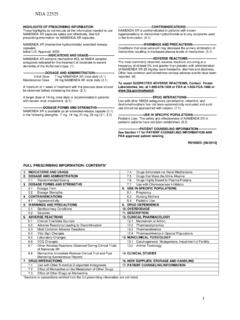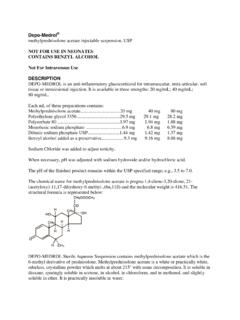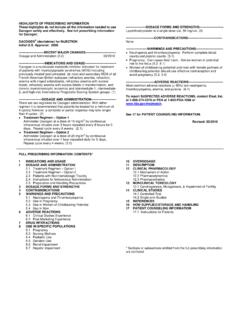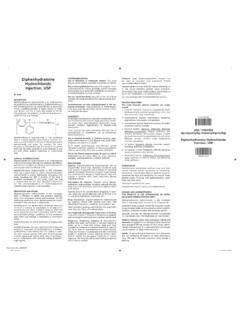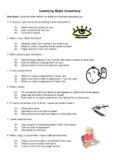Transcription of Living with your Pacemaker - Food and Drug Administration
1 Living with your Pacemaker A Patient's Guide to Understanding Cardiac Pacemakers Unless otherwise noted, indicates that the name is a trademark of, or licensed to, St. Jude Medical or one of its subsidiaries. ST. JUDE MEDICAL and the nine-squares symbol are trademarks and service marks of St. Jude Medical, Inc. and its related companies. 2015 St. Jude Medical, Inc. All Rights Reserved. Contents Your Contact and Device Information .. 1 Physician Instructions .. 2 Congratulations on Your Device .. 2 The Healthy Heart .. 3 Why is the heart sometimes called a pump? .. 3 What does the heart look like? .. 4 How often does the heart beat? .. 4 What is the AV Node?
2 6 Arrhythmias .. 7 What is an arrhythmia? .. 7 What causes the different kinds of arrhythmias? .. 7 Asynchrony .. 10 What is heart failure? .. 11 Some Basic Facts About Pacemakers .. 11 What is a Pacemaker ? .. 11 Why do I need a Pacemaker ? .. 12 i How does the Pacemaker know when to pulse? .. 13 What does a Pacemaker feel like? .. 14 What happens when the battery runs down? . 14 What happens if a lead needs to be replaced? 15 Types of Pacemakers .. 15 Risks and Benefits .. 16 What are the benefits of having a Pacemaker ? .. 17 What are the risks of having a Pacemaker ? .. 17 Surgery for the Pacemaker .. 19 What will surgery be like? .. 19 What happens before surgery?
3 20 What happens on the day of surgery? .. 20 What happens during surgery? .. 21 What happens after surgery? .. 22 Coming Home after Surgery .. 22 What will happen when I get home from the hospital? .. 22 How often do I need to see my doctor? .. 24 ii What happens during a follow-up visit? .. 24 What is remote monitoring? .. 26 When can I get back to my old life? .. 26 Living with Your Pacemaker .. 27 What is a Patient Identification Card? .. 27 What is the "Patient Notifier"? .. 29 Is it safe to engage in sexual activity? .. 30 Will a Pacemaker limit the things I do? .. 30 Precautions and Warnings .. 30 What is EMI? .. 30 What causes EMI? .. 31 What about MRI?
4 32 What electrical equipment is safe to use? .. 33 What precautions should I take at work?.. 34 Are there precautions I need to take at home? .. 34 What should I do if I am near a source of EMI? .. 35 Will airport security interfere with my device? .. 36 What if I am going into a hospital or clinic? . 36 Will a cellular phone interfere with my iii Pacemaker ? .. 37 Will an iPod music player or other portable multimedia player interfere with my Pacemaker ? .. 38 What about security systems?.. 38 Learning to Live with a Pacemaker .. 39 I am feeling worried or sad. Is there anything I can do? .. 39 My spouse/family member is the patient. How can I help? .. 41 Medications.
5 41 Will I still need to take medication after I have a Pacemaker ? .. 41 food and Nutrition .. 42 I already have heart disease. Will changing my diet benefit me? .. 42 Besides diet, what affects heart health? .. 43 What about sports and recreation?.. 43 What is cardiac rehabilitation? .. 44 iv Other Questions .. 45 Glossary .. 47 Notes .. 53 Index .. 55 v Your Contact and Device Information Have your doctor or nurse complete the information on these pages before you go home from the hospital. Physician Name Phone Number Address Hospital Name Phone Number Address Device Model Number Serial Number Date Implanted Description 1 Physician Instructions Congratulations on Your Device You have just received or you re about to receive a remarkable little device that can improve the quality of your life and may even save your life.
6 It s called a Pacemaker but it s also known as a cardiac Pacemaker . It helps to keep your heart pumping regularly and on time. Invented in the 1950s, these amazing devices about the size of a pocket watch send small pulses of electricity to the heart to help it beat normally. The devices are run by tiny computer chips and sophisticated software. They are powered by batteries that last for years. Millions of people have had these devices implanted, helping them lead normal, full lives. 2 This booklet will answer many of your questions about your Pacemaker . It will also tell you how the surgery is done and how to prepare for it. You ll also find out what happens after the operation, and how to avoid problems when you re Living with your device.
7 After reading this booklet, if you still have questions, discuss them with your doctor. If you come across a word you do not understand, you can find its definition in the Glossary. The Healthy Heart Why is the heart sometimes called a pump? The heart s job is to move blood around the body. Blood contains the oxygen that the organs and tissues need to do their work. The blood cells pick up oxygen in the lungs and the pumping action of the heart moves this oxygen-rich blood to the rest of the body. 3 What does the heart look like? As shown in the figure below, the heart has four chambers. When it is at rest, the chambers fill with blood. With each heartbeat, the heart squeezes blood out into the body.
8 Figure 1. A typical heart 1. Right Atrium 2. Right Ventricle 3. Left Atrium 4. Left Ventricle How often does the heart beat? A normal heart beats 60 to 100 times each minute. 4 When you exercise, get excited, or experience stress, your body needs more oxygen. Your heart beats faster to keep up with the demand. How fast it beats is controlled by a small area in the upper chamber of your heart. This area is the heart's "natural Pacemaker " and is called the sinoatrial (SA) node. It sends out an electrical signal that causes your heart to beat. The figure below shows the location of the SA node. Figure 2. The sinoatrial (SA) node 1. SA Node 5 What is the AV Node?
9 The atrioventricular (AV) node is another specialized area in the heart, located between the upper and lower chambers of your heart. It holds the electrical signal from the SA node for a fraction of a second before releasing it into the ventricle. The result is that the atrium beats first, pushing blood into the ventricle, and then the ventricle beats after it has been filled with the blood from the atrium. The figure below shows the location of the AV node. Figure 3. The atrioventricular (AV) node 1. AV Node 6 Arrhythmias What is an arrhythmia? An arrhythmia is any heart rhythm that is "abnormal." It may be considered abnormal if it is too fast , too slow or starts somewhere in the heart other than the SA node.
10 What causes the different kinds of arrhythmias? Bradycardia Damage to the SA node or blockage of its electrical signal can cause the heart to beat too slowly. This is called bradycardia. A person with bradycardia may feel very tired because their body is not getting enough oxygen. They may also feel light-headed or dizzy. Pacemakers correct bradycardia by speeding up the heartbeat to a more normal rate. 7 Ventricular Tachycardia Sometimes the heart beats much too fast . This is a serious condition called ventricular tachycardia (VT). As shown in the figure below, VT is caused by signals that come from the heart s lower chamber instead of from the SA node. During VT, the heart beats so fast that its chambers cannot completely fill with blood between beats.
